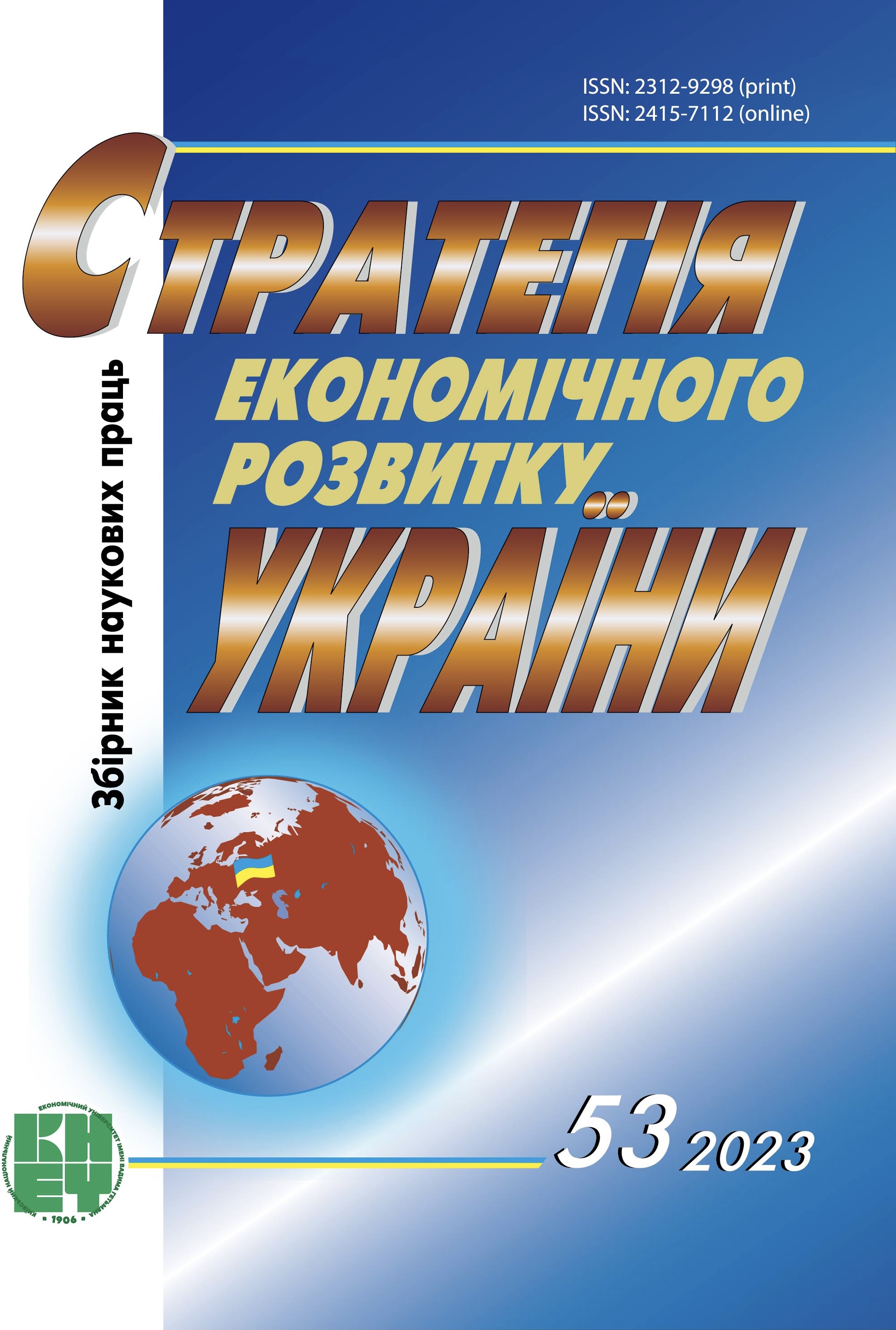РОЗВИТОК ТЕОРІЇ РЕСУРСНОЇ ЦИРКУЛЯРНОСТІ
DOI:
https://doi.org/10.33111/sedu.2023.53.018.034Ключові слова:
циркулярна економіка, ресурсна циркулярність, еволюція, економіка, забезпечення, розвиток, виявлення, функціонуванняАнотація
Досліджено сучасні теоретико-прикладні аспекти розвитку економіки з позиції її ресурсного забезпечення. Наведено хронологію і розкрито сутність еволюційного розвитку поняття циркулярності ресурсів. Систематизовано наукові погляди трактування поняття «ресурсна циркулярність» за існуючими економічними формаціями. Охарактеризовано принципи ресурсної циркулярності у виробництві продукції за групами
виявлення. Проведено порівняння умов ресурсної циркулярності у відповідності до теорій циркулярної економіки. Формалізовано залежність економічних рівнів ресурсної циркулярності від сфер виявлення та інструментів реалізації. Встановлено виявлення ресурсної циркулярності за сферами ресурсного забезпечення агробізнесу.
Посилання
Boulding, K. E. Economic Analysis. Volume I Microeconomics (Hardcover). 4th ed. New York: Harper & Row, 1966.
Meadows, D. H., Meadows, D. L. and Randers, J., Limits to growth: A report for the club of Rome’s project on the predicament of mankind. New York City: Universe Books, 1972.
Stahel, W. R., Reday-Mulvey, G. Jobs for tomorrow: The potential for substituting manpower for energy. New York: Vantage Press, 1981.
Reike, D., Vermeulen, W.J.V. and Witjes, S. “The circular economy: New or Refurbished as CE 3.0? Exploring Controversies in the Conceptualization of the Circular Economy through a Focus on History and Resource Value Retention Options”. Resources, Conservation and Recycling 135 (2017): 246–264. https://doi.org/10.1016/j.resconrec.2017.08.027.
Shkurenko, O. “Intehratsiia staloho rozvytku ta rozvytku biznesu iak dominuiucha osnova modeli tsyrkuliarnoi ekonomiky: teoretychnyj aspekt”. [“Integration of sustainable development and business development as a dominant basis of the circular economy model: theoretical aspect”]. Kharkivs’kyj natsional’nyj universytet imeni V. N. Karazina 13 (2021): 152–165. [in Ukrainian]. https://doi.org/10.26565/2310-9513-2021-13-16.
Hawken, P., Lovins, A. B. and Lovins, L. H. Natural Capitalism: the Next Industrial Revolution. 2nd ed. Earthscan, 2010.
Lacy, P., Long, J. and Spindler, W. The Circular Economy Handbook: Realizing the Circular Advantage. 1st ed. Germany, Heidelberg: Springer Nature Customer Service Center GmbH, 2020.
Kirchherr, J. et al. “Barriers to the circular economy: evidence from the European Union (EU)”. Ecological Economics 150 (2018): 264–272. https://doi.org/10.1016/j.ecolecon.2018.04.028.
Riepina, I. M., Koshel, A. H “Osoblyvosti vykorystannia potentsialu resursnoi tsyrkuliarnosti lisovykh hospodarstv”. [“Peculiarities of using the resource circularity potential of forestry”]. Ekonomika ta pidpryiemnytstvo 47 (2021): 37–48. [in Ukrainian]. https://ir.kneu.edu.ua:443/handle/2010/37273.
Geissdoerfer, M., Savaget, P., Bocken, N. M. P. and Hultink, E. J. “The Circular Economy: a new sustainability paradigm”. Clean. Prod. 143 (2017): 757–768.
Geng, Y., Zhu, Q., Doberstein, B. and Fujita, T. “Implementing China’s circular economy concept at the regional level: A review of progress in Dalian, China”. Waste Management 29 (2009): 996–1002.
Yuan, Z., Bi, J. and Moriguichi, Y. “The circular economy: A new development strategy in China.” Journal of Industrial Ecology 10 (2006): 4–8.
Zink, T., Geyer, R. “Circular economy rebound.” Journal of Industrial Ecology 21 (2017): 593–602.
##submission.downloads##
Опубліковано
Як цитувати
Номер
Розділ
Ліцензія

Ця робота ліцензується відповідно до Creative Commons Attribution-NonCommercial-NoDerivatives 4.0 International License.


